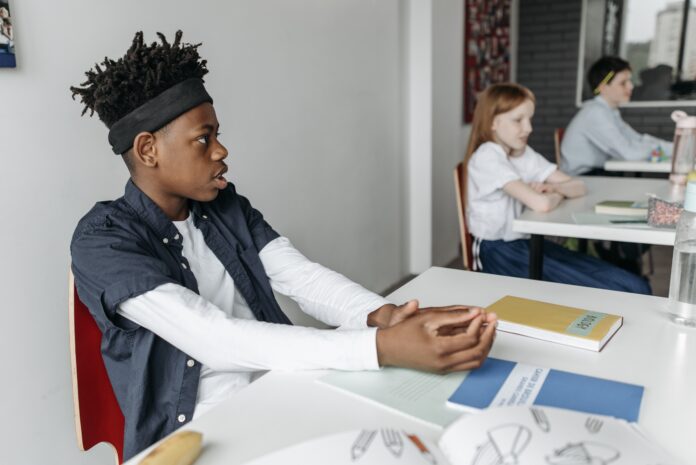
By
Every August or September across the United States, a new crop of 5-year-olds starts their K-12 academic journey. These youngsters head to school to learn valuable life skills — like counting to 100 or learning how to spell their names. Educators often rely on stories and fairy tales, like “Little Red Riding Hood,” to teach them these important lessons.
Imagine an educational system, however, where — alongside this fundamental knowledge — from day one, Black children are taught about their own Blackness, using books that reflect their own identities.
What impact might this have, if students, regardless of race, were given a curriculum that centers Black folks’ contributions to society, rather than just the Thomas Edison’s of the world? Can you imagine it?
Ernest Crim III, a Black history specialist and CEO of Crim’s Cultural Consulting LLC, can.
Through his virtual “K-5 Black History Book Club For Kids” where students read the texts many schools are working to ban, Crim is directly challenging continued efforts by policymakers to whitewash school curricula.
“I knew I could provide something for those kids that they probably won’t get in class or until high school,”
ERNEST CRIM III, CEO OF CRIM’S CULTURAL CONSULTING
Crim, who left public education last year, says he encountered a plethora of hurdles when trying to teach about Black history, despite not living in one of the states aiming to remove critical race theory from education plans.
“We have so many standards and curriculum that are outside of our control that we have to meet.”
Through his published works, viral clips on TikTok and Instagram, and now weekly book club — Crim is determined to ingrain the true historical lives of Black people, and their communities, into families across the country.
“I knew I could provide something for those kids that they probably won’t get in class or until high school,” Crim tells Word in Black.
The book club, launched last February, meets (almost) weekly at 6 p.m. Central Time, with students of all ages, races, and backgrounds.
Before we start class, everybody has a personalized affirmation, then we have a class affirmation, and we do deep breathing
ERNEST CRIM III, CEO OF CRIM’S CULTURAL CONSULTING
“One of the parents has the youngest child there, outside the range I anticipated,” Crim says. “She’s four. It’s a K-5, I got some kids in there 9.”
The mother wanted her daughter in the class because of how important it is for her to immerse in a diverse, challenging setting, Crim tells Word in Black.
“She just thinks it’s important for her to be in this environment because she used to live in a mixed environment, but she moved to an area that super, super white – like Middle America,” Crim says.
Aside from feeding students’ brains through texts like “Bedtime Inspirational Stories: 50 Amazing Black People Who Changed the World,” Crim has also added social, emotional, and physical wellness to the weekly agenda.
To teach mindfulness at 4, 5, and 6 – that’s a generational shift right there.”
ERNEST CRIM III
“Before we start class, everybody has a personalized affirmation, then we have a class affirmation, and we do deep breathing. We do three or five deep breaths together,” Crim says. “The students call them ‘Crim Breaths,’ so I call them Crim Breaths now.”
Now, anytime a student is nervous about speaking in front of the class or feels stressed, anxious, or sad, Crim encourages them to take a step back and take some deep breaths.
Mindfulness is also something that many children don’t get to learn about in school.
“They may not remember everything, but they’ll remember the contribution that was made.”
ERNEST CRIM III
“I like to believe that’s breakthrough; I didn’t start meditating until my 20s,” he says. “To teach mindfulness at 4, 5, and 6 – that’s a generational shift right there.”
By introducing students to these concepts earlier, Crim hopes he can pave the way for a personal, and community change that doesn’t have to wait until they reach high school.
“When you get kids to high school, you can have an impact, of course, but the people who have the most impact are the parents, the teachers — whoever [is] in the community in their first five years,” he says.
“They may not remember everything, but they’ll remember the contribution that was made.”


